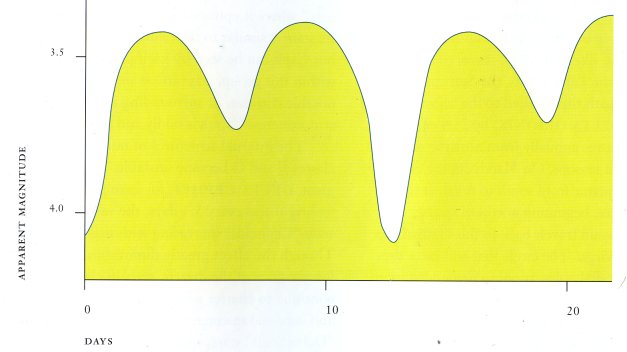
 |
The light curve of Beta Lyrae, magnitude plotted against time, shows continuous variation over its 12.9-day period as a result of tidally distorted stars and flowing gas. The deeper primary eclipse takes place when a hot B0.5 dwarf hidden by a thick surrounding disk gets in front of a lesser but still very luminous B7 giant. The system has challenged astronomers for decades. From The Hundred Greatest Stars, J. B. Kaler, NY, Copernicus Books, 2002, as adapted from Burnham's Celestial Handbook, R. Burnham Jr., New York, Dover. |